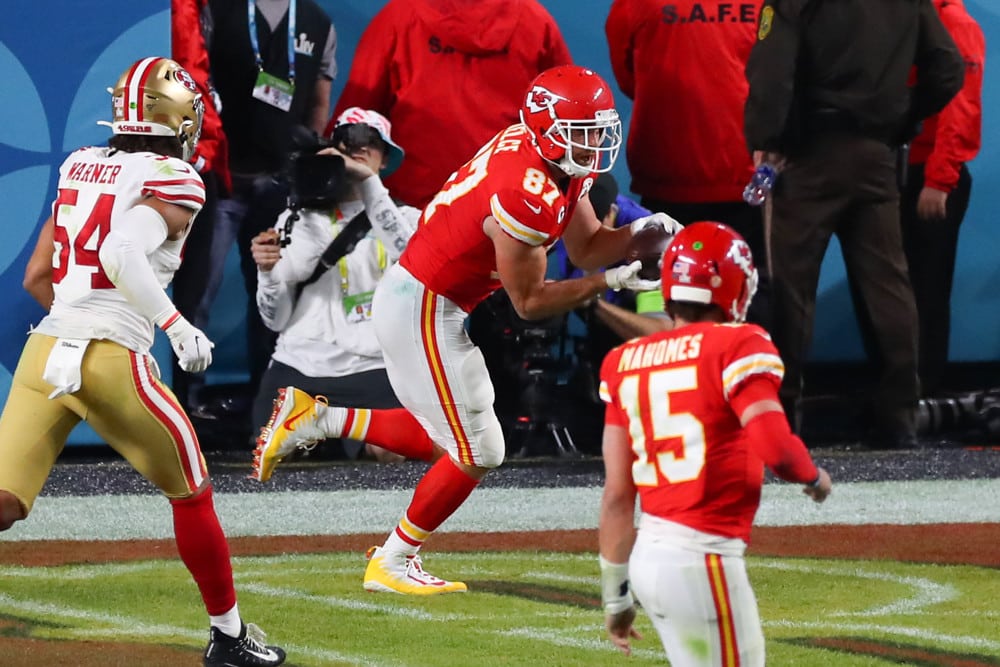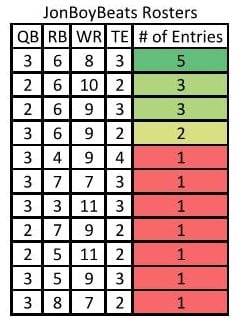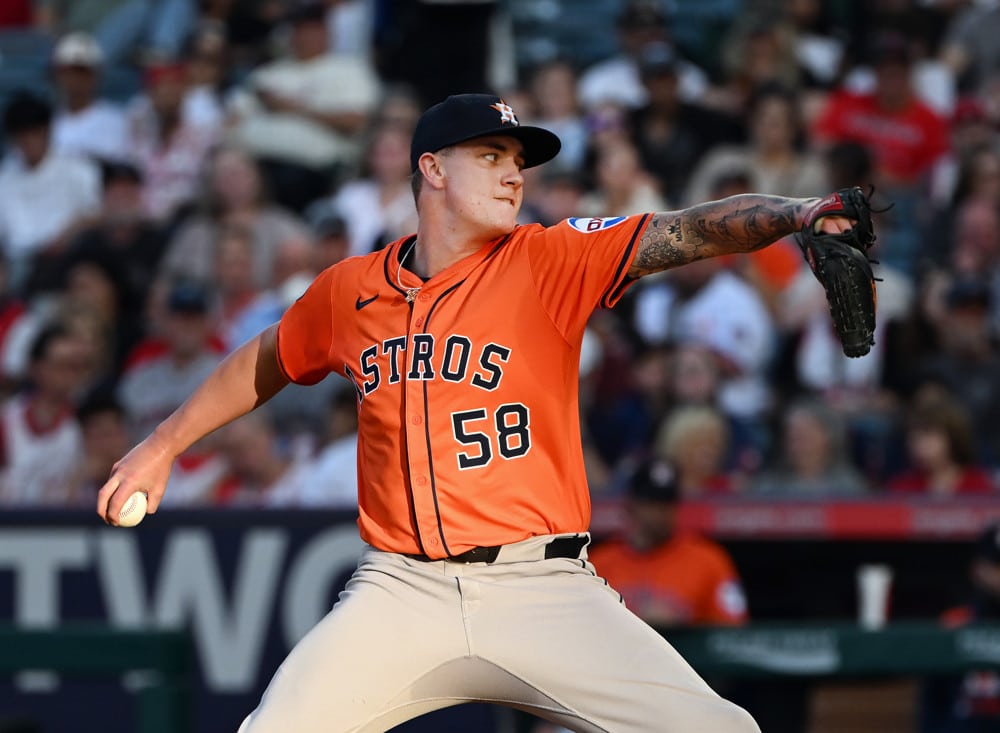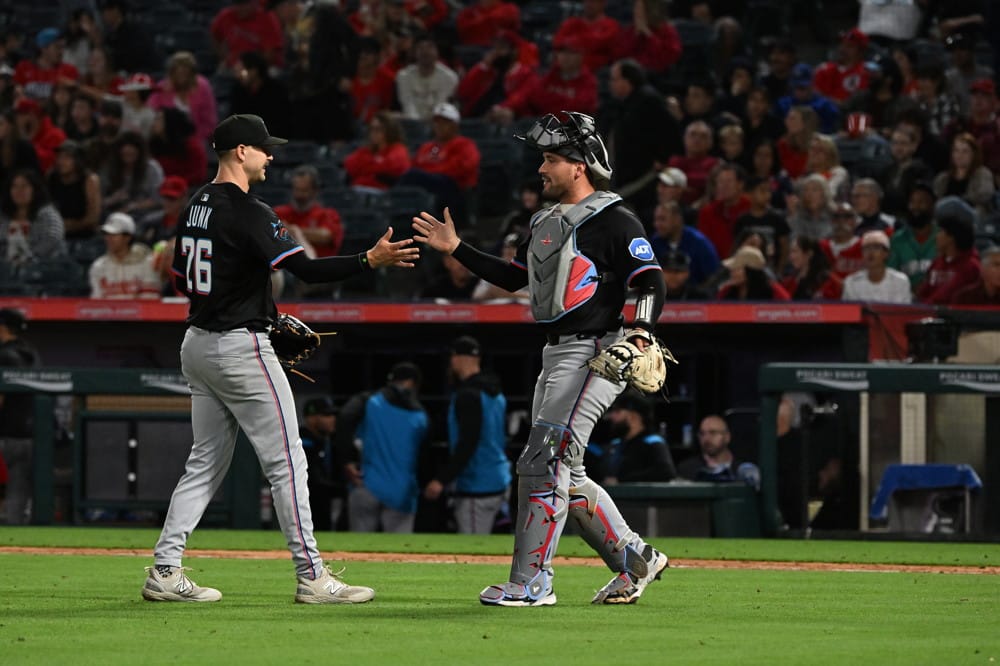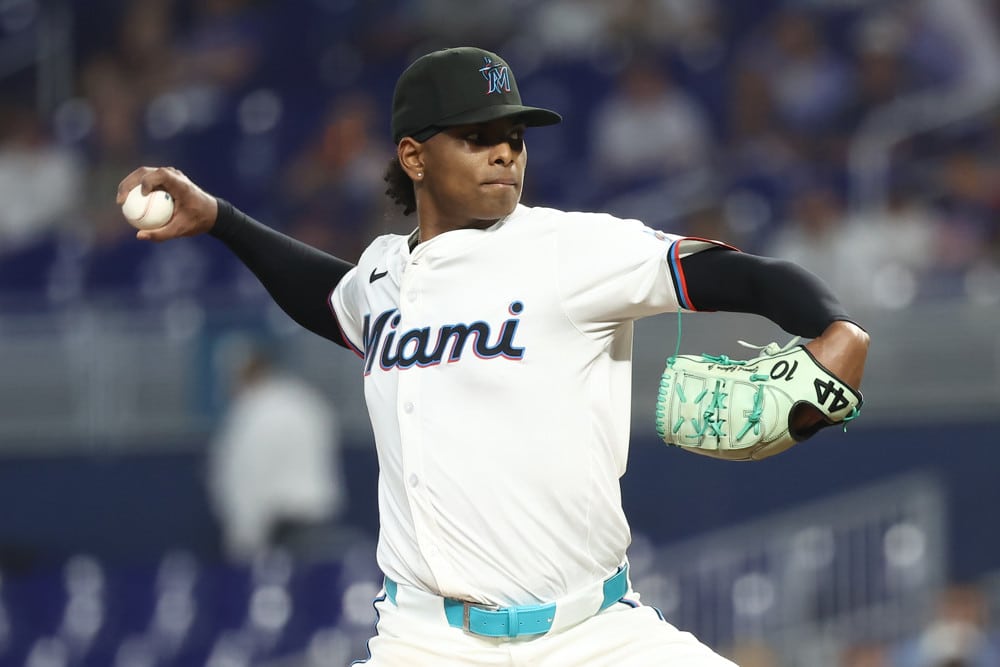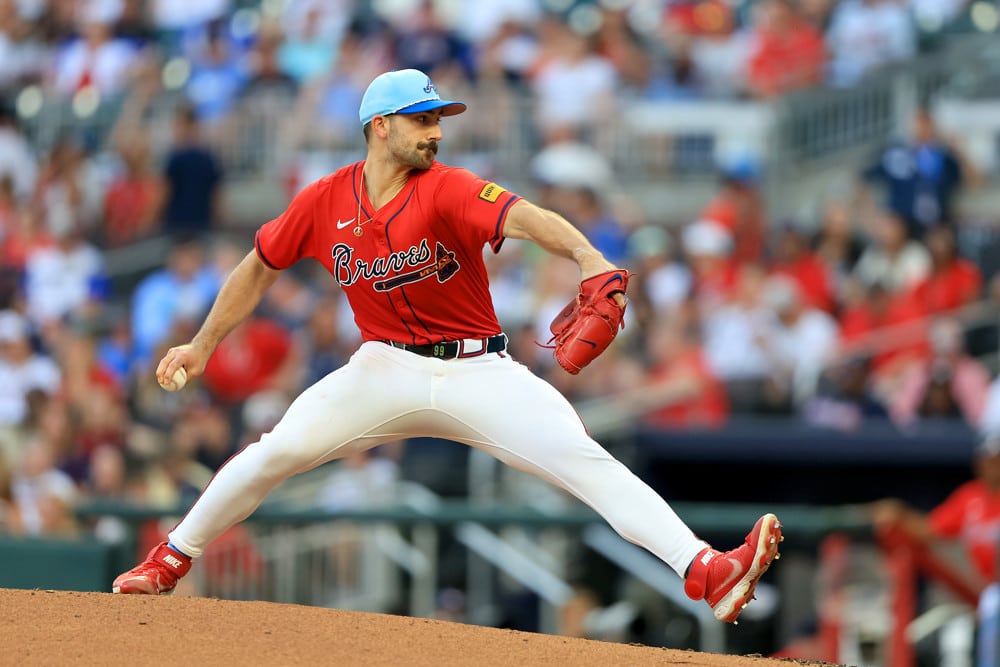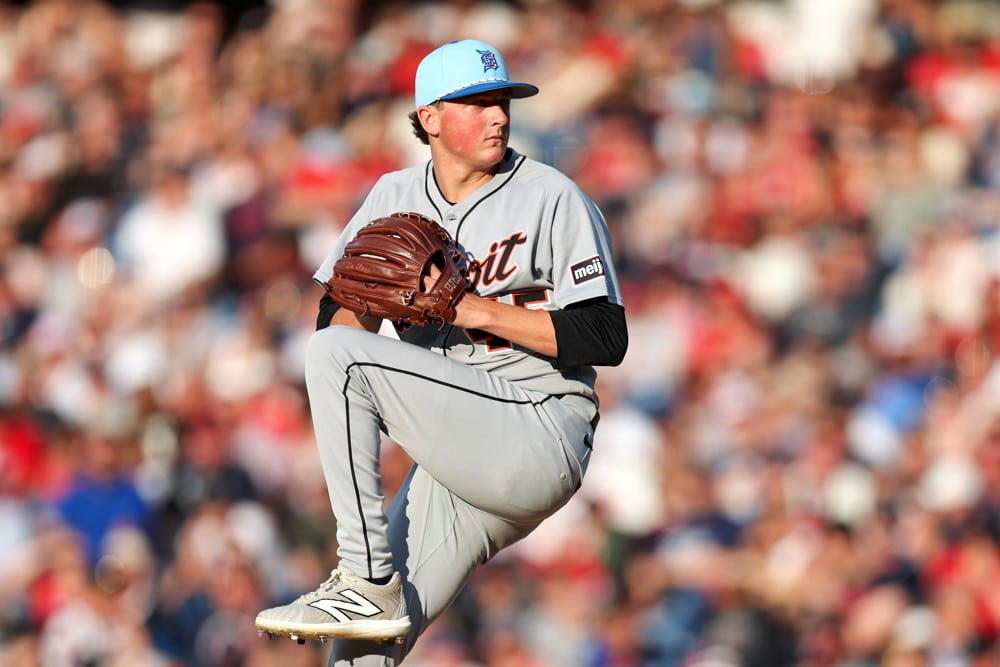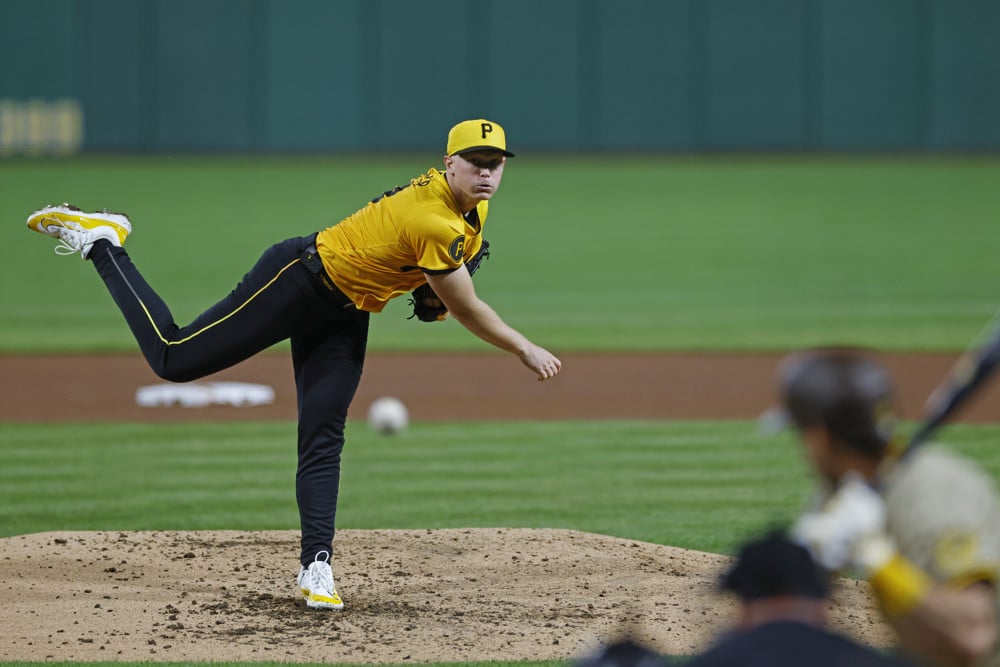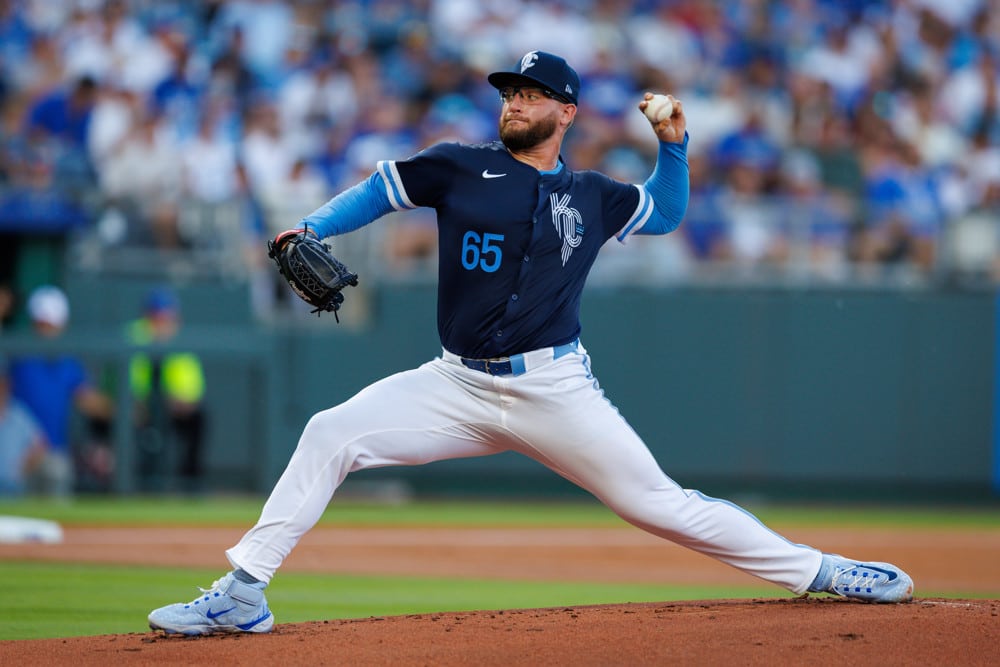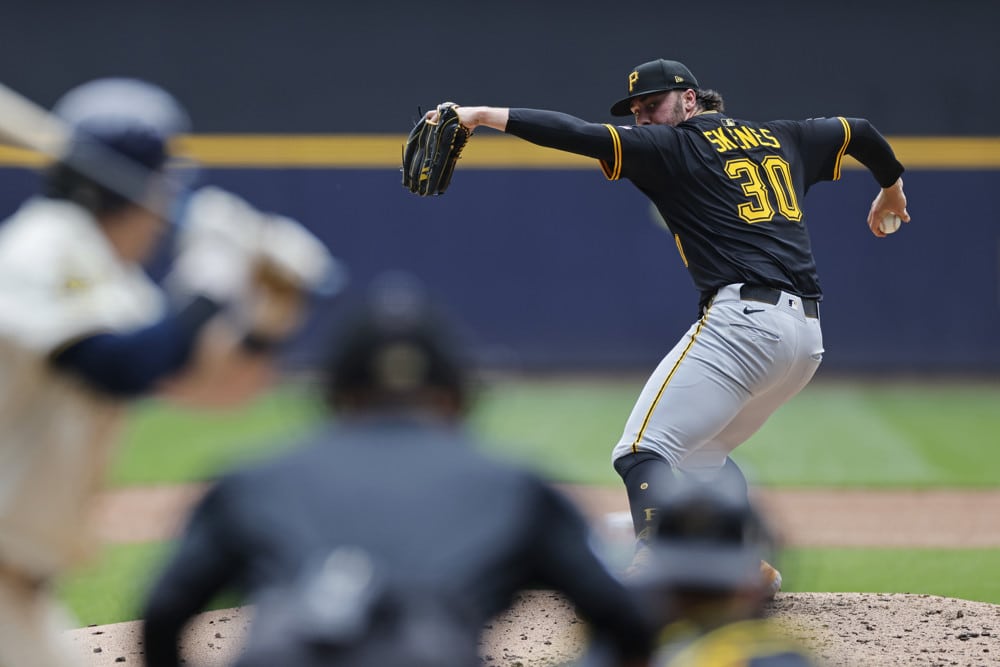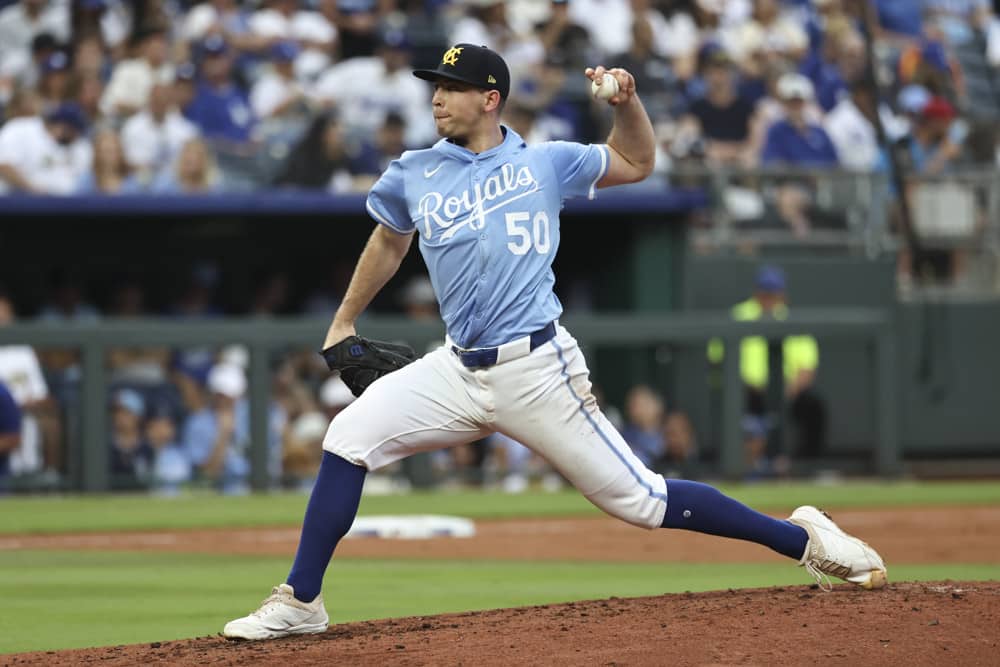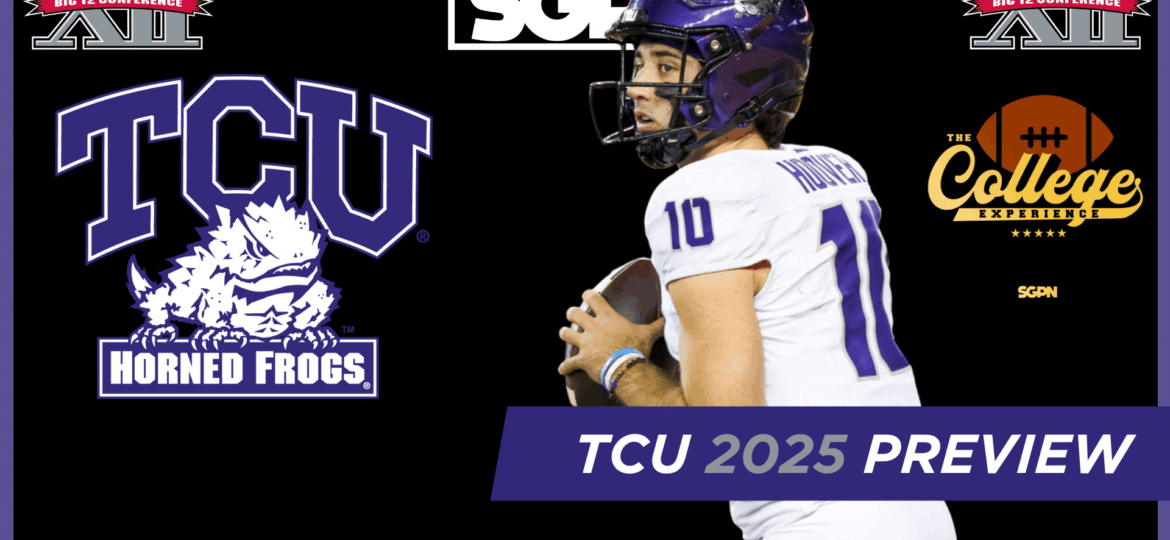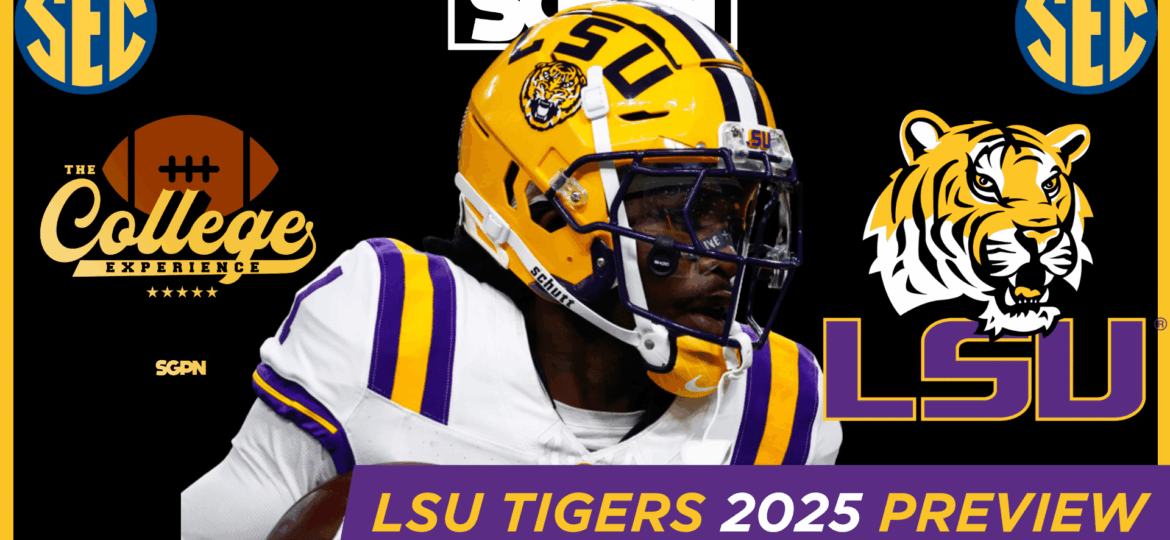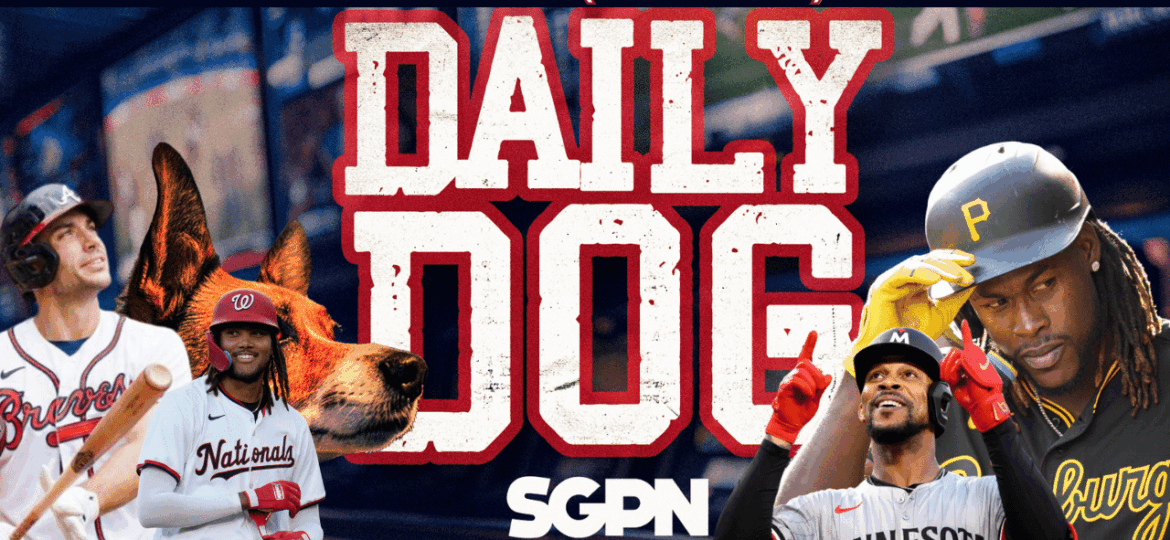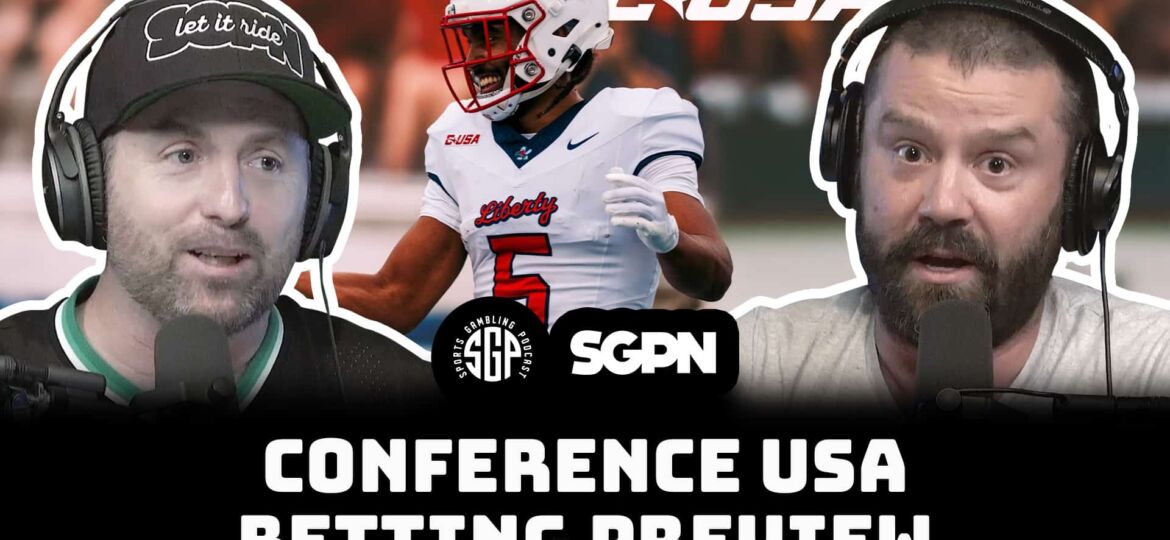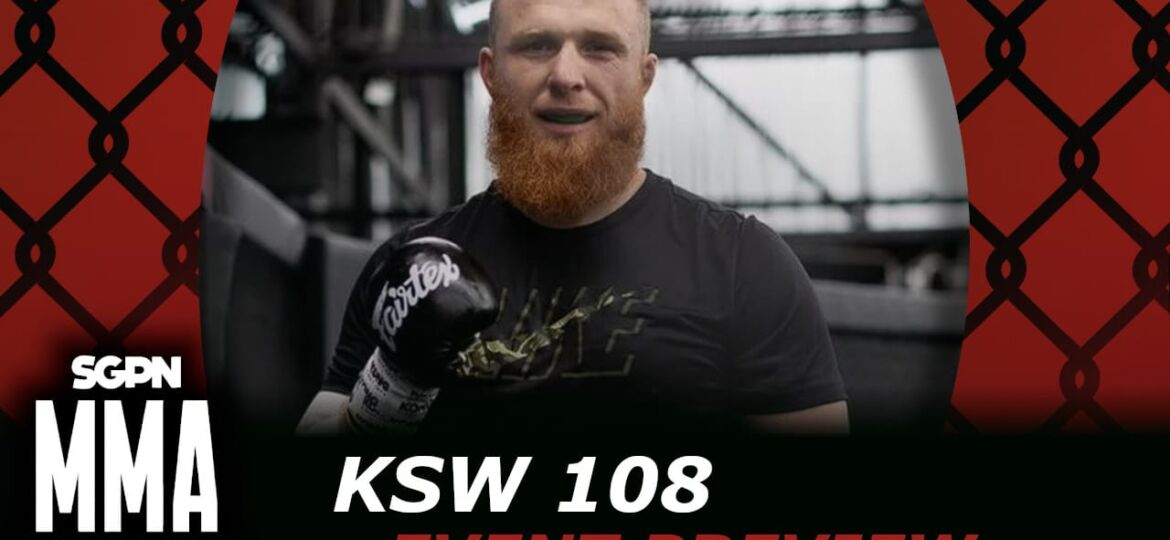There is a new kid on the block in the world of NFL Bestball leagues and they are hitting the fantasy football community by storm this summer.
Drafters Fantasy Sports is starting to pick up a lot of steam after introducing their 2020 Bestball Championship contest a few weeks ago. It’s a 10,000 person “GPP” style season-long tournament with a $50,000 prize pool including a cool $10k paid out to the winner. The contest has a $5.50 entry fee and a 100-entry cap per individual player. As I am writing this, the contest is currently about 40% filled up, and the original smaller 5,000 entry contest has already filled.
RELATED
Draft Diaries: Fantasy Football Dynasty Startup, SuperFlex & TE-Premium, Rounds 1 – 2
32 Biggest Fantasy Football Questions For 32 NFL Teams
Scoring & Rules
Drafters keeps their scoring and rules pretty straightforward. The starting lineup is 1 QB, 2 RBs, 3 WRs, 1 TE, and 1 FLEX. The drafts are 10-12 teams, 20 rounds, and have a 60 second timer. The scoring is typical PPR with 4pt per Passing TDs. In the first couple of championship tournaments they rolled out, there is currently no playoff format, so the highest overall score after 16 weeks will get the big $10k prize. Now that we’ve got the basics out of the way, let’s dig into some important strategy for how to differentiate yourself from the other 10,000 entries in the player pool.
Whether it’s a large tournament like this or a weekend daily fantasy GPP tournament during the season, it’s always important to focus on building lineups (or in this case rosters) which will not have a lot of duplication. If you go through a draft just focusing on picking near ADP while bringing in some typical Value-Based drafting principles, I can almost guarantee that while you may have a high scoring team at seasons end, you will have a much larger chance of splitting that prize pool with a lot of other teams. In order to grab a larger stake of the prizes, you have to go against the norm, you have to be risky, and make sure your rosters are different.
Roster Construction
How should you fill up your roster spots? Since there are 20 overall spots, and 4 positions to fill, what makes the most logical sense? Let’s start with the onesie positions of QB and TE. You definitely want to have 2 players at both of these positions, and in order to minimize injury risk, it probably makes sense to have 3 of each. Then, with 14 spots left it probably makes sense to have 6 RBs and 8 WRs (to match the starting position allocation). Well, just like that you have talked yourself into a roster construction that will probably match around half of the player pool. Remember what I said above, you have to be different! I entered 20 rosters in the previous 5,000 person tournament and the breakdown of my roster construction is shown below. I only have around 25% of my lineups following what I expect to be the most common construction, and I also have some really risky builds in there including a hyper-fragile 3 RB build. We know it’s important to differentiate in roster construction, but how do we figure out how to do it effectively?
Drafting Positions at the Correct Time
Let’s talk through the consensus public opinion on when to draft each position this year. After a huge RB year last season where a lot of 3rd & 4th round picks ending up scoring extremely high, RBs are the most important position coming into the 2020 season. While I agree that it’s an absolute no-brainer to take one of the five stud RBs if you have the opportunity in the first round, I do not agree that there should be 24 RBs going in the first 5 rounds of 10-team leagues. As such, a lot of players are drafting at least 2 RBs in their first 3 rounds. This seems to work out perfectly since the WR position is so deep this year. You can skip out of some of the early round studs and still get some really great players with huge upside in Rounds 4-6. Cruising right along on the value train, this RB-WR start fits perfectly in line with where the elite QBs (Wilson, Prescott, Watson, Murray) are being drafted, which is oftentimes after Round 6. Then, with this being arguably the deepest TE class that we’ve had in a long time, it’s easy to sell yourself on punting at this position until past Round 8 and still being able to pick up some great players. Before you focus on building too many lineups that fit in with this perfect logic, just remember that a lot of the fantasy world agrees with you and will be trying to follow the same pattern, which makes you more likely to have duplicated lineups. So how do we zig while everyone else zags?
First of all, it’s important to not be overly cute and completely buck the trend on all of these 4 positional “public opinions”. However, you can definitely build some contrarian lineups by doubling down on some of these trends. Do you want to start with a heavy RB build? Take 3 straight RBs and then completely punt on the position until after Round 15. Do you find yourself always taking one of the QBs that’s available at the beginning of Round 6? Well why don’t you go and try to get both Dak and Deshaun if you end up with a pick near the turn, and then don’t take anymore QBs the rest of the draft. Are you unable to stay away from the amazing TE value late in drafts? Challenge yourself to broadening your “value” list and then wait as long as possible to grab two or three of the 8-10 guys on your list. Do you love some of the WRs that are being drafted in the 4th through 6th round? Try grabbing two of the elite WRs with your top 2 picks, and then grabbing only one of your mid-round crushes and see how you like your roster at the end of the day.
Here’s a couple of examples of how I have built some lineups using these angles:
3 Elite QB: Patrick Mahomes (3rd), Russell Wilson (8th), Deshaun Watson (9th); RB1 – Alvin Kamara (1st) & WR1 – Courtland Sutton (6th)
Double Elite TE: Travis Kelce (2nd), Mark Andrews (4th); RB1 – Saquon Barkley (1st) & WR1 – Kenny Golladay (3rd)
Zero RB: Kareem Hunt (6th), Derrius Guice (9th), Phillip Lindsay (10th); WR1 – Julio Jones, TE1 – Kittle
Value TE: Hunter Henry (9th), TJ Hockenson (13th); RB1 – Alvin Kamara; WR1 – DeAndre Hopkins
Heavy WR: Hopkins (1st), Jones (2nd), Odell Beckham Jr. (3rd), JuJu Smith-Schuster (4th), Sutton (5th); RB1 – Cam Akers (7th), TE1 – Hockenson (13th)
Stacking Full-Throttle Offenses
Stacking players is a common (almost necessary) tactic in the DFS world, due to the high-score correlation that players have on an offense that blows up on a weekend. If a QB throws for 5 TDs, it will usually work out really well for you if you have the WR and TE who catch 4 of those TDs. This theory, while highly volatile in a typical season-long best ball league, has huge upside in a large tournament and has the potential to produce some huge weekly scores that you will need to vault yourself closer to the top of the leaderboard. The most common stack is going to be QB-WR-TE and its almost laughable how easy it is to stack the most explosive trio in the league. If you get slotted into the 1.07 through 1.10 slot, you have the opportunity to grab Tyreek Hill in the first round, come back around with Kelce in the 2nd, and then grab the $500 million dollar man himself, Mahomes, in the mid-to-late 3rd round. If you take their averages over the past two seasons, this team stack is getting you almost 70 points per week! This weekly consistency is where the high floor upside of team stacking reveals itself. But don’t worry, if you are concerned with using your top 3 picks all on the same team, there are plenty of other options out there. Remember when Matthew Stafford started out the season on fire last year averaging the 2nd most QB points per game under new offensive coordinator Darrell Bevell? Well, if you find yourself grabbing Golladay in the 3rd round, then you should try and target Marvin Jones (8th), Stafford (11th), and Hockenson (13th) during the rest of the draft.
Here’s a sample of the stacks that I have nabbed so far:
Cincinnati Bengals: Joe Burrow (14th), AJ Green (8th), Tee Higgins (18th)
Kansas City Chiefs: Hill (1st), Kelce (2nd), Clyde Edwards-Helaire (3rd)
Seattle Seahawks: Russell Wilson (7th), Chris Carson (5th), Tyler Lockett (6th)
Carolina Panthers: Teddy Bridgewater (18th), Christian McCaffrey (1st), Ian Thomas (19th)
Buffalo Bills: Josh Allen (8th), Stefon Diggs (6th), John Brown (10th), Cole Beasley (19th)
In summary, with a huge tournament like this, it’s extremely vital that you find a way to be intentionally contrarian in order to differentiate yourself from the competition. It may feel uncomfortable while you are in the draft room, and I can guarantee that it will be hard to pass on some of the players or positions that seem like knockout value in any given round. But, if you can stay vigilant, and use a couple of the strategies I’ve outlined above I am fairly certain that you will look back at your roster at the end of the draft and be very satisfied with it, and you just might find yourself sitting in some of the big money spots at the end of the season. Hopefully, I’ll see you up there!
RELATED
Draft Diaries: Fantasy Football Dynasty Startup, SuperFlex & TE-Premium, Rounds 1 – 2
32 Biggest Fantasy Football Questions For 32 NFL Teams


